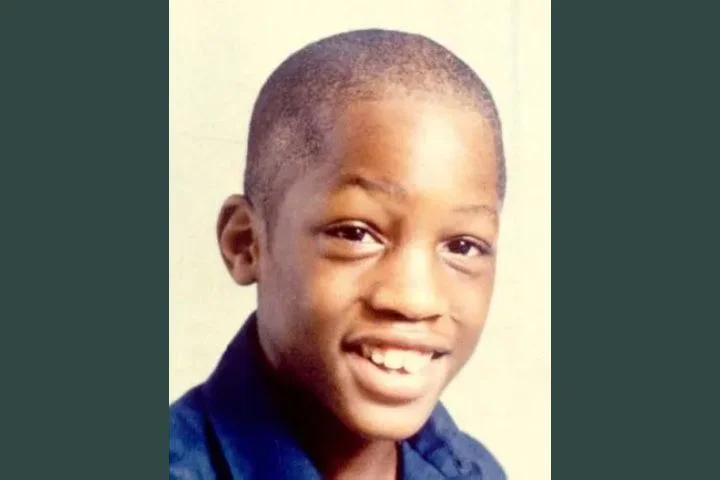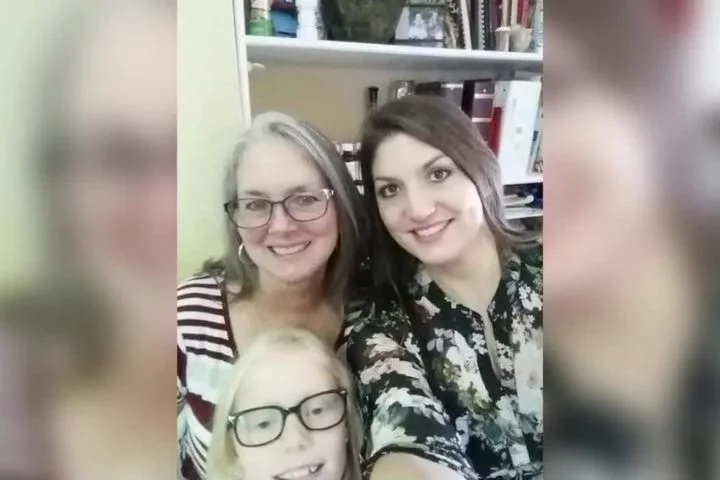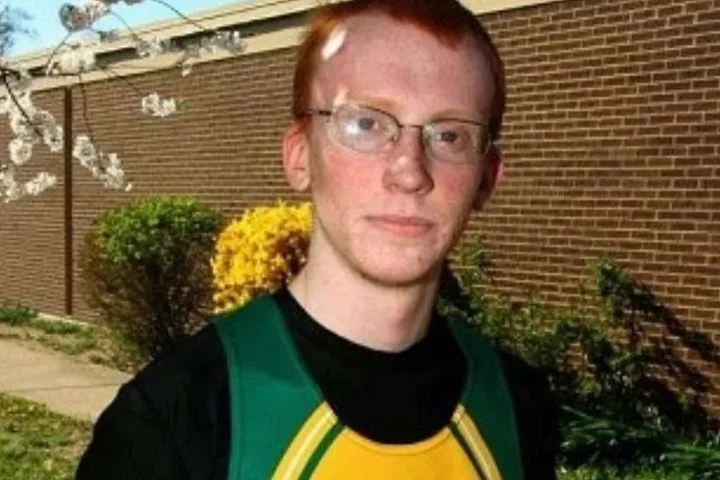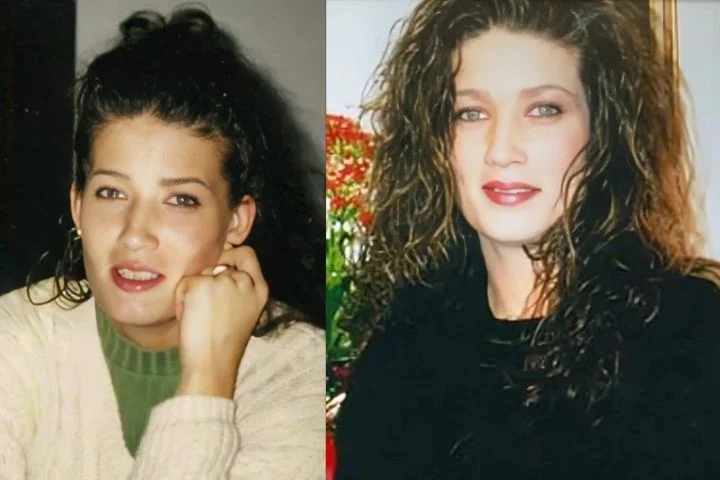It was a mild afternoon when Lorraine Herbster finished work around 4:00 pm on Friday, March 9, 1979. The 17-year-old had started a new job as a laboratory technician at Microcircuit Engineering Corporation in Mount Holly, New Jersey the previous week; she enjoyed the work and got along well with her new co-workers. Since Lori didn’t have a driver’s license yet, one of her co-workers volunteered to give her a ride home.
Lori lived in the Tarnsfield housing development in Westampton Township, New Jersey. Her co-worker dropped her off at the entrance to the housing development, which was just a short drive from Microcircuit. Lori waved goodbye to her co-worker and started making the six-block walk to her house on Whitlow Drive. She never made it home and she was never seen again.
Lori lived with her parents, Terry and Betty Herbster. She had promised her mother that she would come straight home after work that day as she wanted her mom to take her to a local bank so she could cash the paycheck she had received on Thursday. When she failed to show up, Betty wasn’t too concerned. Lori would often babysit for one of the neighbors on Friday nights, so Betty thought she had forgotten about their plans to go to the bank and just headed straight for her babysitting job.
Terry and Betty found Lori still not home when they woke up around 7:00 am the next morning. When Betty called the neighbor whose kids she often watched, she told her that her daughter hadn’t been there the night before. All of Lori’s friends were called by her and Terry, but none of them knew where the teen could be.
Betty and Terry were getting scared by 9 a.m. Lori hadn’t replied, and no one they called knew where she was. They called the Westampton Township Police Department at 9 a.m. to say she was missing. While they were waiting for the police to arrive, they found Lori’s purse in their front yard, left behind.
Terry told the police that his daughter was not the kind of teen who would run away from home because she loved her new job and was close with her parents. Getting her driver’s license was something she was looking forward to, and Terry had already bought her a car to use once she passed the test. The car was in the driveway, but it wasn’t being driven.
Betty told the police that her daughter was shy but liked to act tough, and she tended to stay at home a lot. She liked riding her bike and playing the flute. She had gone to the Burlington County Vocational and Technical School but dropped out during her junior year. At the time, she was engaged to her high school boyfriend and making plans for the wedding. But they broke up in December 1978, and Lori chose to get a job instead of going back to school.
When the Westampton Township police first started their investigation, they talked to Lori’s friends and coworkers. However, none of them could help them find the teenager. After going to all the houses along the path Lori would have taken to get home, they found someone who remembered seeing the teen walk by around 5 p.m. It wasn’t clear how her purse got to her front yard, and no one saw her get there.
On Tuesday, March 13, 1979, police in Westampton Township blocked off the road in front of the Tarnsfield housing development. They stopped every car that came or went from the development, put up missing person flyers with Lori’s picture, and asked people if they had seen or heard anything strange around the time she disappeared. They were disappointed that no one could give them any good leads.
The police didn’t know what had happened to Lori. They couldn’t find any signs of wrongdoing, but the teen had never run away before, and none of her friends thought she had left on her own. Investigators talked to a lot of people who knew Lori but still couldn’t figure out where she was. The coworker who dropped her off that Friday afternoon was asked to take a polygraph test to make sure his story was true. He passed without any problems, so he wasn’t thought to be a suspect in Lori’s disappearance.
The body of a young woman was found on the side of the road near the Deptford Mall in Deptford, New Jersey, on Thursday, March 15, 1979. Officers who arrived thought they might have found Lori, but they quickly learned that the body was that of an older woman and not the missing woman.
Investigators used bloodhounds and a helicopter to search the Tarnsfield housing development and the surrounding area several times, but they couldn’t find anything that was linked to Lori’s disappearance. Detective Gary Stephens of the Westampton Police Department told reporters that he thought Lori had been killed. He said that she hadn’t told any of her friends that she was unhappy at home and that she hadn’t taken any of her things with her. The day before she disappeared, she got her first paycheck from her new job. It was found in her bedroom.
It had been a month since Lori was last seen, and the investigation didn’t seem to be moving forward. Lori’s parents said they would pay $1,000 for any information that led to her safe return in the hopes of getting new leads about where their daughter was. The case slowly went cold after the reward didn’t turn up any new clues.
It was six months after their daughter went missing that Terry and Betty moved from New Jersey to Alabama. She said, “I had to leave that house because my husband got a job offer down there.” The detectives in Westampton Township kept in touch with her on a regular basis, but they never had anything new to say.
It took years, but detectives still couldn’t figure out what happened to Lori after she left work that Friday afternoon. She told the reporters, “You never get over this.” You still feel lonely and want to hear from her. Are you crazy because you don’t know? Things don’t get better.”
Russell Minuto, the chief of police in Westampton Township in March 1987, chose to look at Lori’s case again. Reporters asked him about the four calls he got over the course of three weeks from men who said they knew what happened to Lori. They all said they would come to the police station to talk to him, but none of them showed up. They also wouldn’t give him their names.
Chief Minuto felt down because the men seemed to be playing with him, but he couldn’t give up on the case. “I began to believe that someone must know what’s going on.” I want to get these people to come in so that we can finally solve this case.
The calls came in at the same time, eight days before the anniversary of Lori’s disappearance, which made Chief Minuto sure that they were made by four different men. “Something tells me that these calls are not pranks.”
Betty told reporters that the news that the police were looking into her daughter’s case again made her feel better. “A few years ago, I stopped calling because there was never anything new.” Even though she didn’t think her daughter was still alive, she wanted to know what happened to her so she could put the past behind her.
Chief Minuto told the press that he was sure Lori had been killed by someone else. My worst fears have come true. I don’t think she ran away very likely.” The only missing person case in Westampton Township that had been going on for a long time was hers, and the whole police department was eager to finally solve it. There’s a bad thing: if any of the four men who called really did know what happened to Lori, they never called back to tell the police. The case quickly went cold again.
At that point, Lori had been missing for ten years. In 1989, some of her friends wanted to make sure that no one forgot about the missing teen. Lori’s best friend Diane Truitt and her close friend Liz Royers never thought that Lori had run away from home. They were sure that she had been taken and probably killed. Fourteen years after Lori went missing, the two put up a billboard at the corner of Rancocas and Holly Roads, where she was last seen.
There was a picture of Lori on the billboard that said, “Missing but remembered.” This place was last seen on March 9, 1979. People who knew anything about the case could call the number on it. Diane and Liz were hoping that it would finally get someone to come forward with the information they needed to bring their friend home. Diane told the press, “I hope this all ends in something.”Someone must know something.”
Liz said that all they wanted was to put things behind them. “That hurts.” It really hurts. We should know what happened to her, whether it was bad or not. Sometimes I don’t think I’d want to know, but now I do.
Detectives from the Westampton Township Police Department said they hadn’t found any new clues since the men called in 1987. They were angry that there were no signs at all of what had happened to Lori. “We have no idea,” Detective Sgt. Bruce Reed said. She didn’t leave any signs.
Bruce Reed became the police chief of Westampton Township, but he kept working on Lori’s case. “We work on the case, actively, all the time,” he said in 2001. We get a Teletype whenever a body is found somewhere that is close to a match. Over the last 20 years, we’ve had at least 300 or 400 options, but none of them were her.
Chief Reed said that Lori’s case was the only unsolved missing person case in the township. He was personally interested in the case because Lori went missing while he was on patrol. “We wish we knew what happened.”
Lorraine Rea Herbster was just 17 years old when she went missing from Westampton Township, New Jersey in March 1979. Lori has brown hair and green eyes, and at the time of her disappearance, she was 5 feet 4 inches tall and weighed 125 pounds. She was last seen wearing blue jeans, a blouse, and a white sweater with a brown and beige design across the chest. She also had on knee socks and hiking shoes, a brown cat’s eye ring, and a thin gold necklace. If you have any information about Lori, please contact the Westampton Township Police Department at 609–267–3000.






